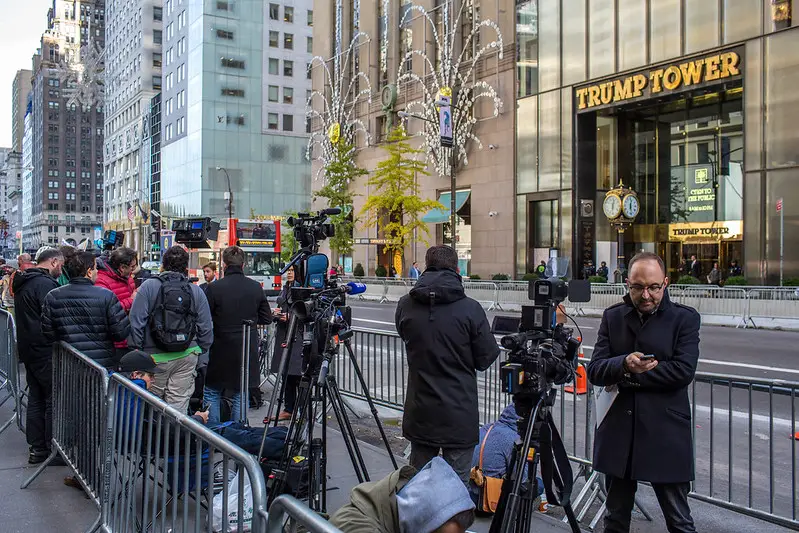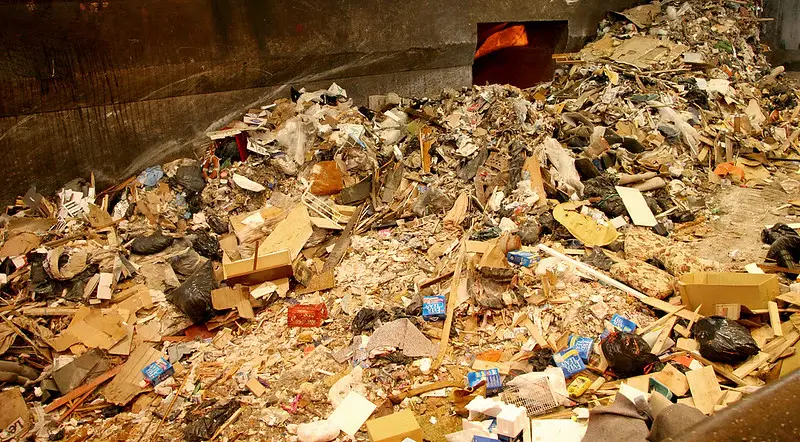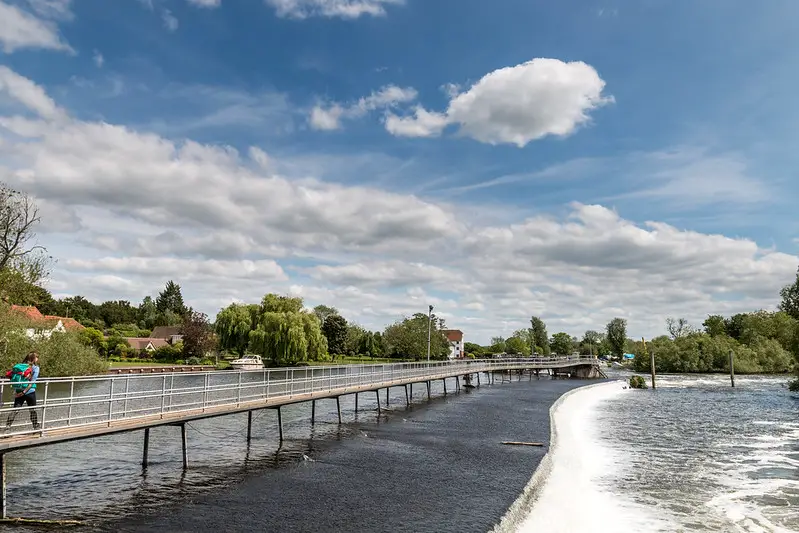Do you think of yourself as someone who is conscious about the environment? If so, it is possible that you truly believe the energy production of the entire world will someday be supplied by alternative sources such as the sun and the wind.
If this is how you think it’ll be, then this summary might come as a great shock for you.
The intense promotion of these alternative energy sources is exaggerated since every alternative energy source has grave disadvantages.
What’s even more terrible is that you’ll learn why believing that technology can solve our problems is simply a justification for us to continue our extravagant lifestyles: are we genuinely concerned with the environment? If so, then we’d consume less.

Chapter 1 – Traditional energy sources, such as fossil fuels and nuclear power, are hazardous and do harm to the environment.
For more than a century, the world’s energy demand has been supplied mostly via traditional energy sources such as fossil fuels and uranium. However, there is an issue about it: these sources are not illimited in the world we’ll run out of them one day whereas the world’s energy needs will never end. Each expert, thus, concurs that we have to find alternative solutions.
Let’s not delve into alternative energy sources yet and instead look at the main traditional energy sources that exist.
Among every traditional energy source, coal is the most terrible source that damages the environment since it is the biggest generator of carbon dioxide (CO2), a greenhouse gas causing global warming.
One other apparent disadvantage is that using coal causes air pollution and makes people more likely to be inflicted with health-related diseases. We can use filters but they won’t solve the problem since they generate a lethal waste that makes the groundwater toxic. As we have to extract the coal from mines before being able to use it, we scar landscapes as well.

Nevertheless, notwithstanding its adverse ramifications, in the USA and China, coal makes up %50 percent and four-fifth of energy, respectively, due to just being more affordable than oil.
One other main traditional energy source is uranium, by means of which nuclear energy is produced. However, sadly, uranium is not a much better option than coal due to its perils.
Although nuclear energy disasters aren’t as much likely to happen as, for example, oil spills, the harm they are likely to give is a lot more devastating. Such things may occur because of operating errors, as happened in Chernobyl, or natural catastrophes, as was the case with the tsunami that was responsible for the Fukushima disaster. Furthermore, as they turn into such devastating things, terrorists may target nuclear plants.
Moreover, stocking the radioactive waste produced by nuclear power is not only costly but also laden with uncertainty, as engineers haven’t invented a long-term storage system reliable and impervious to the radiation from the waste.
Aside from the environmental and health perils, coal and nuclear power actually aren’t that cheap, too: as a subsidy watchdog says, what makes them profitable is simply state tax subsidies.
Chapter 2 – Such alternative energy sources as biofuels carry hazardous impacts, too.
Compared with the traditional energy sources we talked about in the preceding chapter, people consider sustainable energy sources to have the potential to meet our energy needs today without exhausting a resource through which people will produce energy in the future.
Alternative energy-generating methods, like solar, wind, water, hydrogen, and biofuels, are intended to diminish CO2 emissions and mitigate global warming. One other objective is to reduce the world’s use of and dependency on fossil fuels to neutralize their adverse impacts.
Generally, there are two principal groups of alternative energy sources: there are re-growable energy sources and renewable energy sources, both of which are also called re-growables and renewables, respectively.
The question is whether they actually are sustainable? To begin with, let’s examine re-growables, and then move on to the renewables in the subsequent chapter.
When we look at them for the first time, re-growables seem as if they could be a perfect substitution for our depleting traditional energy sources. There is a very well-known example of that: firewood. When you use it for heat, more trees begin to take place of the one you cut. So long as trees continue to exist, they will never diminish.

In the present day, such biofuels as biomass, biogases, bioalcohol, and biodiesel, follow fundamentally from the idea of transforming plant and animal matter into energy and then have that matter regrown after harvesting it. Presently, these biofuels make up approximately five-hundredth of the United States’ energy needs.
However, in spite of its advantages, the generation of biofuels is not only precarious when it comes to food security but also perilous for climate change.
How come?
Since farmers stop cultivating food crops so as to create profitable biofuels, about which researchers have warned us, this will increase food prices everywhere in the world. As a result, the poor around the globe will receive the most damage.
In addition, generating biofuels can in fact expedite climate change. In this case, this would fully render null and void the wanted outcome of biofuels.
In Brazil, for instance, farmers want to generate biofuels so much that they cultivate the land allotted to sugarcane with biofuels. And to compensate for the shortcoming in food production, they chop down rainforests to make more land for sugarcane plantations. But such food products as sugarcane don’t absorb sunlight as much as rainforests do. As a result, climate change aggravates.
Chapter 3 – Such renewable energy sources as hydropower and solar power are not ideal, too.
In the preceding chapter, we’ve seen there is another group of alternative energy sources known as renewables, or sources almost limitless, like solar and water power, which we’ll look at in-depth.
The downside of solar energy is that it’s produced through solar cells, during the production of which there is a huge emission of extremely potent greenhouse gases.
How impactful are they?
Let’s examine one of these gases, nitrogen trifluoride (NF3): NF3’s potency is 17,000 times more than that of CO2, and this gas has been increasingly more present in the atmosphere at a frightening rate of %11 for each year.
Hydropower, however, is in fact a very sustainable means of generating energy. Energy is produced through the construction of dams on rivers and then making water move through in order that it spins turbines. With the help of nature’s water cycle on earth, after the construction of dams and power plants are complete, they will generate energy that can be used by future generations.

Presently, roughly a quarter of global electricity production is obtained from hydro plants.
Sadly, hydropower isn’t ideal, too, since it may give rise to interstate disputes.
The reason behind it is that rivers can pass through several states. Each of the Congo, Nile, Rhine, and Niger rivers runs within about ten states. Should one state construct a dam to produce hydropower, other states downstream may not get a sufficient amount of water, bringing about drought and possibly even hunger. This may engender disputes, such as the conflicts between Pakistan and India and between Uzbekistan and Tajikistan, as we can observe.
Chapter 4 – Though alternative energy sources may be sustainable, their generation is unsustainable.
Maybe the major ruse in alternative energy sources is that, despite them being possibly renewable or re-growable, the means and methods necessary to produce power from them are not. Let’s examine these two examples:
The car that uses hydro energy looks like an excellent green way of transportation since it uses a hydrogen fuel cell whose emission is simply pure water.
However, the hydrogen generation for the fuel cell invariably necessitates crucially more energy than the cell ultimately provides. The reason for this is that hydrogen gas must be turned into liquid form by means of high pressure and freezing, a process that requires huge volumes of energy that’s most often generated through traditional sources. Other ways of carrying out this process don’t look so viable: in 1994, researchers constructed a hydrogen generation plant in California that uses solar power; however, only after ten hours could the dam generate merely one kilogram of hydrogen, equivalent to a gallon of gasoline.

There are similar constraints when it comes to wind energy, too. Though the wind itself is surely a renewable source of energy, the turbines converting the wind into energy are not so. In order to understand their effect on the environment during their lifecycle, it is possible to use lifecycle estimates – like manufacturing them, carrying them to their location, maintenance, disposal – and the estimates demonstrate that wind turbines, in fact, necessitates a great deal of traditionally generated energy.
It is possible to track the carbon footprint of wind turbines, too, which involves measuring the amount of CO2 they create. While you may believe their footprint would certainly not be as much as those of traditional resources since the turbines don’t create any CO2, you’d make an incorrect assumption: In constructing the turbines, CO2 emissions are so much that it usually creates more downside than upsides for wind power over traditional energy sources.
As has been shown by a study in the UK, roughly %60 of the wind turbines constructed in Manchester will give rise to a net rise in carbon. There is one way of lessening this, which is to build the turbines on very windy locations; however, many of these locations have been used to supply only one-hundredth of the worldwide energy needs.
Chapter 5 – It satisfies people to think that novel clean means will remedy environmental issues.
Taking into account all these downsides, it seems people exaggerate alternative energy sources a lot, to say the least. Then what is the reason for people being inclined to overlook all the downsides of alternative energy sources?
We should look for the answer in our inner motivations.
Initially, thinking that we can continue to live as extravagant as we do now with the help of novel clean-energy-generating types of equipment is tempting since it won’t be necessary to restrain our excessive consumerism should scientists and engineers manage to remedy the issue for us, right?
This situation is called a green conscience and it lets us relish our lives, not worrying about what will happen to our world in the future.
To really face the negative aspects of alternative-energy sources would compel us to understand that we have to diminish our energy consumption, and people are inclined to consider this approach unsatisfactory. The idea makes them think things such as bathing under cold water, reading things with only moonlight, sweating in a bus without any air conditioning, and so on.

Next, most people strictly assume that technological developments will rectify all our issues. From 1970 onward, environmentalism in Europe and the United States has been under the influence of the idea that technological development and innovation will bring about ecological modernization that’ll initiate the environmental and economic benefit.
However, there are researchers who assert this is just an illusion, and putting our faith in it has us presume energy without environmental effect is possible. As stated by one Swedish researcher, the reason for such positive feelings regarding advancements such as the hydrogen car and nuclear power is the product of this same optimism. They practically hold a mirror to the world’s age-old chimera of devising a Perpetuum mobile – a hypothetical device that runs with no need for energy. However, surely, devising a machine like that poses a material impossibility, and attempting to make the fantasy come true through hydrogen fuel cells and uranium simply poses a great risk.
Chapter 6 – Green marketing advertises a picture of alternative energy sources based on the ideals.
Has it ever called to your mind that nearly every politician, corporation, and the media make promotions of alternative energy sources as the answer to all our issues?
If this is also the case for you, you are on the right path: green marketing is ubiquitous in public. What is the reason for this, though?
To begin with, politicians are aware of the likely economic profits new energy technologies can bring. They expect the alternative energy industry will stimulate the economy and open new job positions and thus change unemployment numbers.
What’s more significant, journalists nowadays appear to arduously back alternative energy technologies without having no idea what they’re actually backing. They hinge on the information presented by alternative energy corporations and public relations firms rather than actually delving into the issue as a true investigative journalist would do.
The method of source journalism is the result of the media sources financially unable to keep as many journalists as they want to have. Bear in mind that about %60 percent of online journalists think that they need to concentrate on presenting the information instead of discussing information because of cost pressure.

As a result, journalists don’t dive into this issue to discover the disadvantages of alternative energy forms.
Furthermore, journalists’ effort to not be subjective also creates its own quandary. They may look as if they’re abiding by their principle of objectivity by degrading the energy debate to a contest between alternative and traditional energy sources; however, while they are doing that, they completely ignore more manageable, non-technical alternative answers like car-sharing, going to work on a bicycle and other energy-sparing means.
No debate is ever limited to two sides alone.
Multinational corporations that promote alternative energy pressurize journalists, too. A new report published by the Pew Research Center demonstrated that nearly seven-tenth of journalists working at local newspapers believe that business pressure affected their work. This does not indicate companies are really commanding journalists on what topic they are going to write: what they do is more elusive. For example, normally, corporations have funded research to which journalists resort as their information sources.
Chapter 7 – Technological solutions cannot grapple with the essence of the energy crisis: our unreasonably high demand for energy.
Apart from all the downsides discussed in the preceding chapters, there is one other vital defect of alternative energy sources: they don’t grapple with the actual essence of the energy crisis, like our excessive demand for energy. Rather, they simply present technological solutions or means of generating more energy or enhancing energy productivity. To simply explain, their objective is to find solutions for the symptoms, not for the illness itself.
Furthermore, something as professedly good as enhancing energy productivity has downsides, as it may ironically result in a greater, not less, demand for energy.
This results from the Jevons Paradox, whose name was given after economist William Stanley Jevons. In 1865, he studied the way the UK’s consumption of coal was affected by James Watt’s discovery of a more effective steam engine. He discovered that though Watt’s invention initially increased total energy efficiency since the coal consumption diminished, it was beneficial in rendering steam engines cheaper and widespread in the long term so that the coal consumption in fact rose.
In the same fashion, improving the productivity of modern tools and machinery will render energy more affordable; therefore, the demand for energy will rise and we will end up where we first started: excessive energy demand and inadequate energy supply.

Keeping all this in mind, what is the reason that we continue to side with solutions tackling energy production rather than those tackling energy reduction?
The reason is that our economy has been for very long under the influence of an approach known as productivism, in which mainly things that are produced and their producers are held in high esteem. Therefore, productivism deters us from seeking energy-reducing solutions like devising walkable neighborhoods or going to work on a bicycle. Solutions like this don’t promise to tackle things the same way that, for example, novel wind turbine companies do. It is mostly impossible to get a patent for and advertise energy-reducing ideas and, and consequently, they are unprofitable in the economy.
Chapter 8 – Convincing people to reduce their consumption is more straightforward should it concentrates on concrete benefits.
It has been now obvious that the energy crisis is not the result of a shortage of energy but is the result of our excessive amount of consumption, which means people can be part of solving the crisis by choosing to reduce their consumption.
But what is the way of changing our presently productivist-consumerist focused lifestyles to something more humble?
The most important barrier is that, typically, it is either difficult for people to comprehend or it doesn’t really bond them however their current response affects the future. Smoking among teens is an example: Though people tell them smoking carries cancer risks, teens don’t give up smoking unless the downside of it shows itself soon. The same goes for climate change as well: it’s not an instant peril; thus people aren’t actually aware of what the downsides will look like.
To eradicate this inclination, our attempts to alter people’s behavior should center around more concrete and instantaneous downsides.
In one anti-smoking campaign, for example, they drew attention to how a date can go terrible should your breath stinks like that of a smoker. This instant negative aspect was shown more convincing than the likelihood of cancer someday in the future.
In a similar way, convincing people to consume less energy will be more manageable should it have got concrete benefits, such as being able to set aside money or to save time. The fact that Europeans have a lower energy consumption than Americans and are also inclined to be more satisfied proves this point.

Americans live in a work-and-spend vicious cycle in which their consumption is high; thus, they have to toil to make more money. The amount of time Americans spend vacationing, for instance, has declined by a mean of almost three-tenths in the last twenty years.
Or think about Americans spending money on sweets, snacks, and soft drinks. All these products have hardly any nutritional content; and still, almost %60 percent of the US food industry’s energy is expended for manufacturing them. Thus, should you choose to restrain your consumption, you’ll not only be wholesomer but also save energy.
Chapter 9 – The government should use policies that urge corporations and people to diminish energy consumption.
Apart from persuading people to alter their consumption habits, there are other measures lying before the US that can be beneficial in saving energy across the whole economy. In order for such measures to wırj, their objective should be lowering energy consumption while improving well-being, and not be very costly.
For starters, the focus of taxation should be concentrated more on consumption rather than on income. For years, the prices of commodities haven’t actually held a mirror to the downsides of the energy needed to manufacture them, and this has to undergo a change.
There is a law in California, for instance, that enables the charging of money for goods that consume a lot of energy. The outcomes of this law are impressive: throughout the last ten years, the national average energy consumption for each person has increased twice as much, whereas California has been able to keep it steady. And in spite of this energy thriftiness, California is still one of the ten happiest states in America.
Next, the government should begin to underpin smart packaging.
Roughly 60 percent of Americans’ garbage is made up of packaging material. Just think about the amount of energy expended on manufacturing, recycling, and getting rid of all this material. To solve this problem, the US should adopt the European way and make it necessary for marketers to cover the expenses of recycling and getting rid of their packaging.

One other reason why it is a good idea to compel corporations to reconsider their packaging is that more than 300,000 Americans wind up in emergency rooms every year due to having injured themselves while removing the package of a good.
Lastly, the US should permit and make it a legal responsibility to add “No junk mail please” stickers on people’s mailboxes, as is done by European states. Adapting this would dramatically lessen the volume of energy required to manufacture all that undesired junk mail. As the calculations of an expert show, every junk mail in the US has a carbon footprint as much as eleven coal-fired power plants have.
Chapter 10 – It is possible to restrain consumption by taking social actions.
One of the most apparent impacts on global energy demand is how big the population is: if there are more people, it means the demand for energy will be higher.
Therefore, most environmentalists are in the same opinion that the government should enact policies to decrease birth rates. However, according to women’s rights advocate remarks, such a proposition views women as just wombs, infringing on their right to have the command of their own reproductive behavior.
Fortunately, novel methods of environmentalism intend to fix this disagreement by allowing women to choose rather than enacting technocratic birth-rate plans. Research demonstrates that if the governments concentrate more on educating and empowering women, the average birth rates will decrease. By putting this approach into practice, the interests of environmentalists and women right’s advocates meet at a single point.
One other social action we could take to diminish the amount of expended energy would be to protect children from advertisements: the reason is that omnipresent child-focused advertisements are raising a whole generation of consumerist children.
However, this isn’t an easy task for parents: just think about what you would do to preclude your children from viewing advertisements. Or think about making efforts to make your kids comprehend the cruciality of being critical towards consumerism.
In 1970, the US Federal Trade Commission and Federal Communications Commission made an effort to ban child-directed advertisements, however, lobbyists working for companies were able to persuade Congress to obstruct the effort.

This is in contrast with what happened in Sweden, where all child-directed advertisements for children who aren’t older than twelve were outlawed twenty years ago. A recent study points out that this ban has been fruitful in reducing children’s inclination to be consumerist: when writing letters to Santa, Swedish children are more likely to ask for fewer Christmas gifts than states that don’t have similar advertising limitations.
Chapter 11 – Dwelling in cities is greener than dwelling in the suburbs.
Thinking about a green-friendly lifestyle, many people get the same classic thought: a house situated in the countryside or suburbs. However, this is correct only if we are talking about an autarkic lifestyle, a life without any need for transportation.
Normally, dwelling in the suburbs has one significant environmental drawback: you need to drive long miles with a car if you want to get somewhere. With America turning into a suburbanized place, the time Americans waste on average in their cars has risen twice as much over the last three decades to 45 hours each month.
Keeping this in mind, we can say that dwelling in a city is green-friendlier since cities are inclined to be walkable and there are public transportation alternatives.
New York City, for instance, is the most densely inhabited city in North America; however, its greenhouse gas emissions are the lowest for each person exactly thanks to its walkability and the availability of public transport more than in other North American cities.

Cities are usually inclined to be bicycle-friendlier, too. Most Americans haven’t adopted this new phenomenon: the use of bikes among Americans forms less than 1 percent of their trips, whereas the use of bikes among Germans makes up almost 10 percent of their trips, and for the Dutch, this number is 25 percent. Some people may assert this follows from the places being more distant to each other in the US, however, the truth is that for nine-tenth of the trips they make, Americans drive their cars for distances as long as merely one and two miles.
Were we to convince more people to switch to bikes and public transport instead of their cars, the need for parking spaces and garages would be lower in cities. Creating new space by demolishing parking spaces and garages, we could convert them into public parks or other green spaces. Not only would it be beneficial for the environment but people could live in a greener space as well.
Converting cities into a more liveable, green-friendlier place is an essential difficulty for future environmentalists as people cannot be persuaded to move to the cities rather than staying in the suburbs otherwise. To begin with, broadening sidewalks, planting trees, marking safe bicycle roads, and building many new parks and pedestrian areas would be a good starting point
Green Illusions by Ozzie Zehner Book Review
Do we want to save the earth and find solutions to the energy crisis? Then we can’t just wait and expect that technological advancements will find a solution to let us continue as we live today without giving up our high energy consumption habit. Rather, we must urge people to diminish their consumption.
Go to work on a bike.
Have you ever thought about cycling to work rather than driving your car? If you get stuck in the heavy traffic every morning, cycling can get you to your work as fast as your car – or it can get you there even faster. It also helps you save a lot of time as you also work out on your way to your job. Then have a shower at your workplace, you have got all the energy you need for the rest of the day now.
